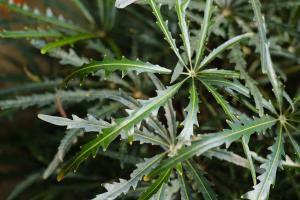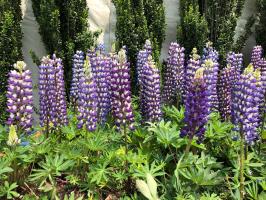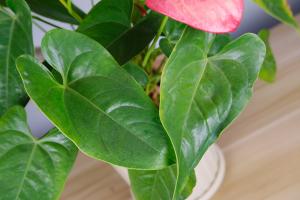Diseases and control of duyinghua
Leaf blight
The main symptoms after the disease: leaf spots or dead leaves. In case of leaf blight, corresponding measures shall be taken in time, and drugs can be selected for treatment. Xueze spray butozin wettable powder, or salquat wettable powder, chlorothalonil and other agents to eliminate patients

Sudden onset disease
The main symptoms after the disease: the plant of duyinghua suddenly lodging, and the plant appears dark brown. Sudden onset disease is mostly caused by bacterial invasion. Germs invade the roots of seedlings through the soil, causing the seedlings to lie down like the ground. That is what we call the quenching phenomenon. In addition, the disease performance of lignified plants is different from that of seedlings, most of which are wilted. Moreover, if the growth environment is humid, pink bacterial colonies will be produced at the plant location where the disease occurs
In view of the disease of seedlings, it is suggested to adopt drug treatment, spray methyltobuzin wettable powder, dixone and other agents for sterilization. Because the sudden onset disease is infectious, in order to reduce losses and better control the disease, the diseased plants should be disposed of in time to prevent infection of healthy plants. All diseases should be prevented from the beginning. Therefore, in the initial planting period, it is recommended to disinfect the soil and kill the bacteria seedling collapse disease is caused by Rhizoctonia solani in soil. Most of the bacteria invade the root and stem base of the seedlings from the surface soil. After the plants are injured, the diseased parts sink and constrict, showing dark brown. The infected seedlings often fall down from the soil surface, resulting in the phenomenon of quenching (the so-called quenching disease); If the seedling tissue has been lignified, the diseased seedlings often do not fall down and show the symptoms of withering. When the soil layer is wet, the disease often occurs in the pink layer


 how many times do yo...
how many times do yo... how many planted tre...
how many planted tre... how many pine trees ...
how many pine trees ... how many pecan trees...
how many pecan trees... how many plants comp...
how many plants comp... how many plants can ...
how many plants can ... how many plants and ...
how many plants and ... how many pepper plan...
how many pepper plan...






























